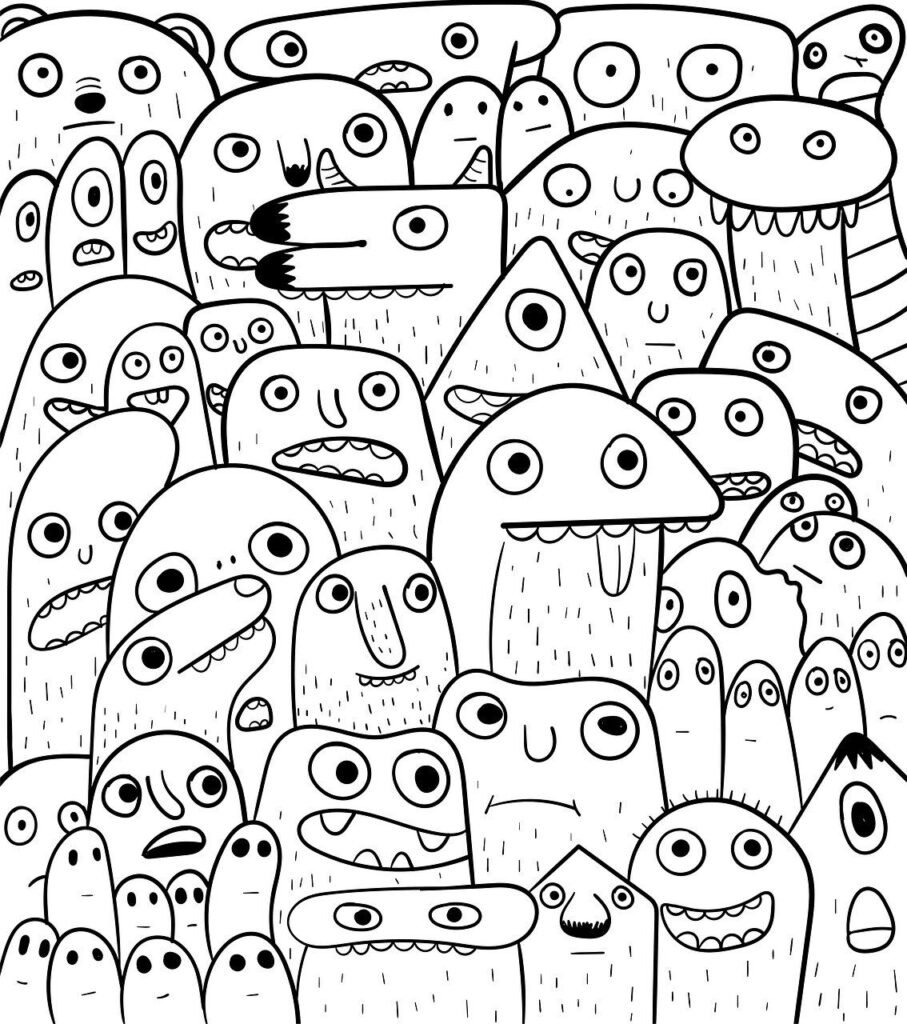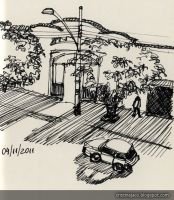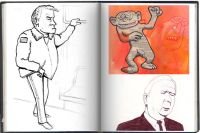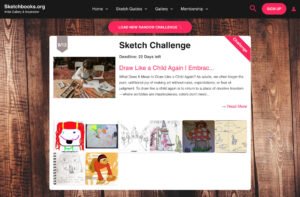Embrace the Art of the Sketchbook
Drawing is a Lifelong Skill. It is an enduring activity that accompanies individuals throughout their lives. Whether you are a child doodling on paper or a seasoned artist sketching landscapes in your favorite sketchbook, the act of drawing has the power to bring joy, self-expression, and mindfulness. In this blog post, we’ll explore why drawing is a lifelong pursuit, the role of a sketchbook in nurturing creativity, and how anyone can embark on this timeless journey.
The Timeless Joy of Drawing
Drawing has been a universal form of expression for centuries, transcending cultures, languages, and time periods. From prehistoric cave paintings to contemporary digital illustrations, this art form remains one of the most accessible and meaningful ways to communicate, create, and explore ideas. Whether used for storytelling, technical design, or pure enjoyment, drawing knows no boundaries—it evolves alongside human creativity while maintaining its innate simplicity.
Drawing from Childhood to Adulthood
A Child’s First Creative Tool
From the moment children grasp their first crayon, drawing becomes their gateway to communication, allowing them to express emotions, ideas, and interpretations of the world. Whether doodling simple shapes or sketching imaginative scenes, early drawings foster creativity and problem-solving skills.
Transitioning to a Sketchbook
As individuals grow, their approach to drawing matures, often leading to the use of sketchbooks. These pages become a space for exploration, where concepts evolve and artistic confidence deepens. Many artists, designers, and hobbyists refine their techniques through structured sketchbook practice, using it to record observations, creative inspirations, and experiments in style.
Drawing as a Creative Outlet for Adults
Regardless of background, adults continue to turn to drawing as a form of relaxation, problem-solving, and self-expression. Whether sketching architectural designs, intricate patterns, or personal reflections, drawing remains a versatile tool for mental clarity and artistic growth.
Rediscovering Drawing Later in Life
A Lifelong Art Form
One of the greatest aspects of drawing is that it’s never too late to begin—or return to—it. Many individuals rediscover their love for sketching during retirement, using it as a medium for self-reflection, relaxation, and exploration.
A Sketchbook as a Companion
For those embracing drawing later in life, a sketchbook becomes a trusted space, capturing moments of inspiration, refined skills, or simple doodles meant for enjoyment. Whether revisiting childhood passions or starting fresh, the act of putting pencil to paper remains an endlessly rewarding pursuit.
Drawing continues to bridge generations, cultures, and ideas, offering a timeless joy that anyone can experience. Whether as a lifelong pursuit or a newfound discovery, its ability to inspire, calm, and connect makes it an essential creative practice for all ages.
Benefits of Using a Sketchbook for Lifelong Drawing
A sketchbook is more than just a collection of pages—it’s a canvas for ideas, a journal for creativity, and a space for experimentation. Whether you’re an experienced artist or simply enjoy drawing as a hobby, a sketchbook remains a versatile companion for personal and artistic growth.
A Portable Companion for Creative Exploration
One of the greatest advantages of a sketchbook is its portability.
- You can sketch anywhere—at home, in a café, or while traveling.
- It allows you to capture fleeting ideas, spontaneous inspirations, and daily observations.
- No need for elaborate setups—just open your sketchbook and start drawing.
This accessibility makes a sketchbook the perfect tool for artists on the go, ensuring that creativity is never constrained by location.
Building Confidence in Your Art
Regular sketchbook use fosters artistic growth and self-assurance.
- As you document progress, you’ll visibly recognize your improvement over time.
- It encourages risk-taking, allowing you to experiment without fear of mistakes.
- Sketchbooks remove pressure—they’re personal spaces where refinement and exploration coexist.
Each page holds a record of growth, strengthening an artist’s ability to trust their creative instincts.
Developing a Personal Style
Sketchbooks provide a safe space to experiment, ultimately shaping an artist’s unique artistic identity.
- Trying different mediums, styles, and techniques helps refine personal preferences.
- Unfinished ideas often lead to breakthroughs when revisited later.
- The repetitive process of sketching strengthens artistic confidence and individual expression.
Over time, a sketchbook becomes a visual archive, showcasing an artist’s progression and personality through each stroke and concept.
A sketchbook is more than just a tool for drawing—it’s a lifelong companion that captures ideas, refines skills, and nurtures creativity. Whether used for structured studies, spontaneous doodles, or expressive experiments, its value remains timeless.
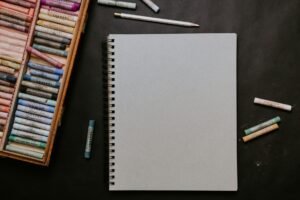
Sketchbooks.org | TRADITIONAL MATERIALS
The Different Types of Pastels | How to Start Using Them Like a Pro
Why Artists Love Working with Pastels Exploring the different types of pastels and how to start using them like a pro opens a dynamic world of soft textures, bold color, and immediate expression. Unlike many...
The Therapeutic Power of Drawing
Drawing is more than an artistic practice—it’s also a deeply therapeutic activity that nurtures mental well-being, encourages self-expression, and enhances focus. Whether through structured sketching or freeform doodling, the simple act of putting pencil to paper provides emotional relief and cognitive benefits.
Mindfulness and Stress Reduction
Finding Calm Through Sketching
Drawing encourages presence and mindfulness, allowing artists to detach from distractions and immerse themselves in the creative process. The repetitive motion of sketching provides a meditative rhythm, reducing stress while fostering a sense of clarity.
Drawing as an Emotional Outlet
Art is a powerful form of self-expression, making it an effective tool for processing emotions. Whether through abstract shapes, expressive lines, or personal imagery, sketching offers an unfiltered space for emotional release, helping individuals manage anxiety or tension.
The Science Behind Relaxation
Studies show that engaging in creative activities triggers a dopamine release, leading to feelings of relaxation and satisfaction. This makes drawing an accessible and non-verbal form of therapy—one that encourages mental balance and personal reflection.
Enhancing Focus and Creativity
Boosting Cognitive Function
Regular drawing sessions train the brain to focus and think creatively, leading to improvements in:
- Problem-solving skills
- Visual memory retention
- Pattern recognition and innovation
These cognitive benefits extend beyond art, enhancing focus in daily tasks, professional work, and creative thinking.
Encouraging Creative Exploration
Sketchbooks serve as safe spaces to experiment, allowing artists to explore new ideas without constraints. This leads to:
- Increased confidence in artistic decision-making
- Strengthened visual imagination
- A deeper connection to personal style development
By engaging in drawing as a therapeutic exercise, individuals unlock creative potential while strengthening mental clarity.
Drawing is more than just marks on a page—it’s a powerful tool for mindfulness, emotional balance, and cognitive enhancement. Whether used for relaxation, focus, or pure enjoyment, the therapeutic nature of drawing remains a timeless gift for self-expression and well-being.
How to Start Your Lifelong Drawing Journey
Whether you’re new to drawing or looking to reignite your passion, the journey begins with simple, intentional steps. Here’s how to establish a lasting, fulfilling sketching habit.
Choose the Right Sketchbook
A well-chosen sketchbook can enhance your drawing experience and keep you inspired. Consider:
- Paper quality: Smooth paper for fine details or textured paper for expressive strokes.
- Size: Portable sketchbooks for daily practice or larger ones for expansive compositions.
- Binding: Spiral-bound for flexibility or hardcover for durability.
Selecting a sketchbook that aligns with your needs ensures ease of use and encourages regular artistic exploration.
Experiment with Tools
Your drawing toolkit should reflect your style and comfort level.
- Start simple: Invest in quality pencils, pens, and erasers.
- Expand gradually: Explore charcoal, watercolors, markers, or even digital tools.
- Try different mediums: Testing various materials helps refine your artistic preferences and expands your creative range.
Experimentation fosters confidence and discovery, allowing you to adapt and evolve within your sketching journey.
Dedicate Time for Drawing
Consistency transforms drawing from a hobby into a lifelong practice.
- Set aside daily or weekly time for sketching.
- Treat it as a routine for creativity and relaxation.
- Maintain a balance between structured studies and freeform doodles to keep it enjoyable.
Drawing regularly keeps your skills sharp and your creativity flowing, making it easier to progress and refine your technique.
Starting your lifelong drawing journey is about commitment, curiosity, and exploration. With the right tools, a sketchbook that feels natural, and a regular practice, you’ll cultivate a rewarding and enduring artistic habit.

Sketchbooks.org | SUBJECT MATTER
The Big 8 Subjects for Art Creation | Every Artist Should Explore
Let’s dive into the Big 8—and why they matter. If you're looking to grow as an artist or rediscover inspiration, knowing the best subjects for art creation can help you develop your skills, voice, and...
Conclusion: The Sketchbook as a Lifelong Partner in Art
Drawing is a timeless pursuit—one that nurtures creativity, enhances observation, and fosters well-being. A sketchbook becomes an extension of the artist, capturing memories, ideas, and progression, making it a deeply personal and enduring tool.
Whether sketching fleeting moments, refining techniques, or freely exploring artistic expression, a sketchbook serves as a trusted companion throughout every phase of life. It evolves alongside the artist, reflecting growth, imagination, and dedication.
So embrace the journey—grab your sketchbook, let creativity flow, and enjoy the lifelong art of drawing.
Ready to Share Your Work?
